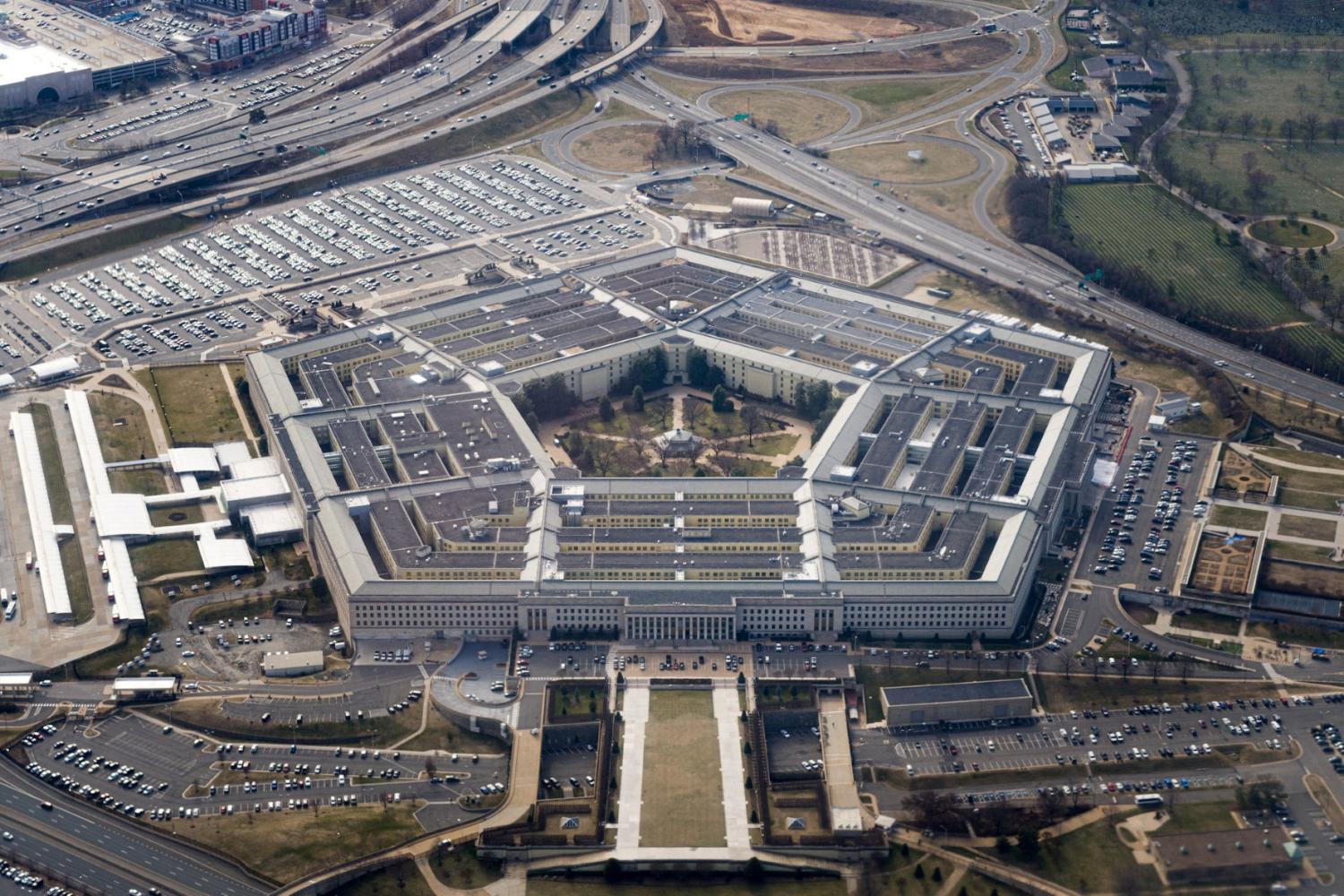Executive summary
The United States faces a moment of profound vulnerability, but also opportunity. The 2024 revelation that China’s Volt Typhoon hacking group had infiltrated U.S. critical infrastructure exposed a quiet but comprehensive threat: the ability of adversaries to disable the nation’s core systems—energy, water, telecommunications, logistics, and emergency response—without firing a shot. Using stealthy cyber techniques, Volt Typhoon and related Chinese, Russian, and Iranian operations represent a new form of warfare that blurs the line between peace and conflict. America’s adversaries are waging long-term campaigns aimed at paralyzing national systems before open hostilities ever begin.
This is a glimpse of modern warfare: quiet, asymmetric, and already underway. After decades when major conflict seemed confined to foreign theaters or counterterrorism operations, total war is back. The United States should respond forcefully but defensively by adopting a whole-of-society strategy of resilience. Allies such as Finland, Sweden, and Poland have shown that comprehensive defense, engaging every sector and citizen, can build unity and practical readiness without militarization. The United States must adapt these lessons to its own scale and character, emphasizing “resilience in place” through coordinated leadership, civic participation, and public-private cooperation.
Key policy recommendations
- Establish a national resilience directorate in the Executive Office of the President to unify strategy, budgets, and standards across federal departments, linking national security, economic policy, infrastructure planning, and social resilience.
- Reorient existing agencies by expanding the Federal Emergency Management Agency’s mission to include anticipatory planning and designating the Cybersecurity and Infrastructure Security Agency as the operational lead for critical infrastructure protection, while encouraging states to appoint resilience officers to synchronize local preparedness.
- Incentivize infrastructure and systems hardening through resilience contracts, public-private cost-sharing, and conditional grants that reward verified continuity planning and independent stress testing.
- Rebuild domestic industrial depth by treating reinvestment in critical manufacturing and supply chains as a core national security priority, ensuring surge capacity and reducing dependence on fragile foreign sources.
- Cultivate civic resilience through education, voluntary service, and local drills. Integrate resilience literacy into schools and expand programs like AmeriCorps and the Civil Air Patrol to train communities in crisis response and counter disinformation.
- Confront polarization and misinformation by strengthening transparent governance and bipartisan leadership. Competitive federalism, empowering states to innovate under national benchmarks, can transform resilience into a unifying civic project rather than a partisan one.
In short, resilience is deterrence. By hardening the homeland, educating citizens, and integrating the public and private sectors under a single national framework, the United States can deny adversaries the hope of easy victory, reduce the risk of escalation, and ensure that American strength abroad rests on unshakable strength at home.
Toward a more resilient national defense strategy
In 2024, the U.S. government confirmed that Volt Typhoon, a state-sponsored Chinese hacking group, had infiltrated critical infrastructure networks supporting U.S. energy, water, and telecommunications systems. Using stealthy “living-off-the-land” techniques, the group embedded itself within routers, servers, and maintenance software in preparation for potential disruption during a crisis. This was not a single breach but a strategic rehearsal: a quiet, long-term effort to compromise the connective tissue of American life.
Volt Typhoon represents an integrated and novel approach to warfare, where America’s adversaries may not need to fire a missile to disable core state functions. They could disrupt emergency services, jam military mobilization orders, or paralyze power and water infrastructure—all remotely. This is a glimpse of modern warfare: quiet, asymmetric, and already underway. After decades when major conflict seemed confined to foreign theaters or counterterrorism operations, total war is back. U.S. adversaries, namely China, Russia, and Iran, coerce and attack America and its allies and partners across the full spectrum of conflict. This includes threats such as irregular “gray zone” tactics, like cyberattacks on the homeland; slow-motion territorial expansion in the South China Sea; and an all-out invasion and a brutal war of attrition in Ukraine that has directly or indirectly brought in dozens of other countries.
America’s enemies are waging expansive, long-term struggles that blur the line between peace and war. The United States should respond forcefully but defensively by adopting a whole-of-society strategy of resilience. Total defense, or comprehensive defense, has a long history in North and Eastern Europe. NATO defines this concept as “an official Government strategy, which encompasses a whole-of-society approach to protecting the nation against potential threats,” drawing on the civil, military, and private sectors. Using this basic framework, but tailoring it to America’s unique needs and characteristics, Washington should double down on past efforts and launch a major overhaul to rewire its defenses at home and abroad with a laser focus on resilience: “the ability to withstand, fight through, and recover quickly from disruption.”
A false choice
The United States is now dangerously unprepared for the comprehensive pressures that characterize total war. Confronted with aggression, Washington could choose to meet force with force—only to risk uncontrolled escalation. A direct war with another nuclear-armed great power in the 21st century would be catastrophic, likely exceeding anything in modern history. A full-scale conflict between the United States and Russia could imperil billions of lives and even raise the specter of human extinction. Alternatively, capitulating to aggression—choosing not to fight—would carry its own dire costs. If the United States consistently backs down in the face of coercion, it would undermine deterrence, shatter the foundations of the global order, and signal to adversaries that America can be pushed around with impunity. Such appeasement would only encourage bolder acts of aggression, inviting a cycle of escalating demands. Backing down today, therefore, risks a larger war tomorrow.
This binary rests on a flawed premise. The conflict is already underway—just not with tanks or missiles. Adversaries like China are conducting strategic rehearsals, using cyber intrusions and pre-positioned malware to prepare for disruption. These actions reflect a doctrine of systems warfare, intended to paralyze a nation’s functions before large-scale combat begins. The U.S. military remains strong on the conventional front but is vulnerable to irregular warfare that falls short of war. Operations such as Volt Typhoon demonstrate that adversaries can inflict significant harm without crossing kinetic thresholds. The United States, therefore, should adopt an approach that denies these benefits, strengthening resilience at home to deter escalation abroad.
A third option: total defense
America’s answer to this bind should be a comprehensive strategy of total defense. This approach mobilizes the entire nation to strengthen both resilience and deterrence. In practical terms, total defense calls for harnessing all elements of national power—military, civil, economic, technological, and psychological—and engaging both the public and private sectors. It is a doctrine of national preparedness in which every citizen, business, and institution has a role to play in guarding the country’s security and way of life.
This strategy differs from today’s fragmented approach to resilience, homeland security, and defense. Under current U.S. policy, preparedness is split among dozens of federal and state agencies with little integration, inconsistent mandates, and limited public engagement. A true total defense posture would require clear national leadership—ideally through a new White House office or supercharged national resilience director—dedicated to aligning federal departments, state governments, and private-sector partners under a unified whole-of-government and whole-of-society resilience effort.
Resilience lies at the heart of total defense. The goal is to deny adversaries the ability to achieve their objectives through shock and division. By investing in resilient infrastructure, strong cyber defenses, secure supply chains, and robust civil emergency plans, the United States can sharply reduce the benefits an enemy might hope to gain from attacks. Equally important, public education, trusted information channels, and social cohesion increase the costs and complexity of any effort to sow confusion or panic from within. Total defense thus aims to deter aggression not only through the threat of retaliation (deterrence by punishment) but by removing the possibility of success (deterrence by denial). A nation resilient to disruption presents no vulnerable seams for an enemy to exploit, thus bolstering deterrence by making aggression infeasible or fruitless. This denial effect also helps stabilize competition, reducing incentives for preemption or escalation. This idea, “deterrence by resilience,” was a key concept in the 2022 National Defense Strategy, although it didn’t go far enough.
Implementing total defense will require a measured overhaul of national preparedness, both at home and abroad. This includes rewiring coordination between military and civilian responders for modern crises, cyberattacks, biohazards, and infrastructure disruptions, and renewing a sense of civic responsibility to fight through adversity rather than fracture. In this paradigm, strength abroad truly begins with strength at home.
To be clear, embracing total defense would be a momentous undertaking. Total defense will require significant investment and political resolve. Hardening infrastructure, repairing social trust, and coordinating public-private readiness will not be simple or cheap. Yet the payoff could be substantial and is worth the cost: A United States that is better defended at home will be able to manage international challenges with a cooler head. Total defense thus offers a path to avoid great-power war by closing off adversaries’ pathways to escalation. It could help shore up deterrence while the United States addresses its domestic weaknesses, making it far less likely that rivals will miscalculate U.S. resolve or perceive an opportunity for quick victory. In the long run, a resilient America will prove safer, more prosperous, and better positioned to lead.
Reviving an old concept
While the term “total defense” may sound novel to Americans today, the concept has important historical precedents. During the early Cold War, the United States maintained a robust civil defense architecture geared toward total war with the Soviet Union. In the 1950s and 1960s, federal and local authorities drilled citizens on emergency responses and built physical infrastructure for homeland defense. President Harry Truman established the Federal Civil Defense Administration in 1950 to coordinate nationwide preparations for a possible nuclear attack. School children learned to “duck and cover” under their desks as Bert the Turtle cheerfully instructed them in survival tactics. Communities were encouraged to construct fallout shelters, and exercises like the 1954 Operation Alert drill tested how cities might evacuate or respond under atomic bombardment.
Of course, many of these efforts proved more symbolic than practical. And by the late Cold War, civil defense had stagnated—hampered by public skepticism and meager funding. After the Soviet collapse, U.S. civil defense institutions largely atrophied, with remaining functions absorbed by agencies like the Federal Emergency Management Agency (FEMA) and redirected toward natural disasters. Yet that legacy shows that American policymakers once treated preparedness seriously and that it could be revived. The challenge is how to modernize civil defense for a world defined by digital interdependence, cyber-physical systems, and cascading disruptions—distinct from but no less perilous than the nuclear age. Unlike the mid-century focus on evacuation and fallout shelters, contemporary total defense should focus on continuity, redundancy, and public-private coordination rather than mass mobilization drills. The aim is not to reprise duck-and-cover, but to apply its civic spirit to 21st-century infrastructure resilience.
Lessons from U.S. allies and partners
The United States can also draw inspiration from allies and partners that have recently embraced their own versions of total defense. Several smaller democracies on the front lines of geopolitical danger have been quietly building comprehensive defense models for years. Finland offers a particularly compelling example. With a population of only about 5.6 million people and a long, exposed border with Russia, Finland has always understood that its survival hinges on harnessing its entire society for defense. During the Cold War, Finland developed a total defense system that would mobilize the military, government, industry, and citizenry in unison if war came. Rather than dismantle this system after 1991, as many neighbors did, the Finns maintained and evolved it.
Today, Helsinki calls this system “comprehensive security,” and it is widely regarded as one of the most mature whole-of-society defense frameworks. The Finnish model integrates whole-of-government and whole-of-society preparedness: regular interagency cooperation, public-private partnerships, and nationwide education on resilience. Finland runs annual national defense courses that bring civic leaders, businesspeople, journalists, and politicians together for intensive crisis-response training. This long-standing approach has produced extraordinary national cohesion and practical readiness across sectors.
Poland is another instructive case. Having endured centuries of invasion and a long Soviet domination, Poland is keenly aware of the danger on its eastern flank. The ongoing war in Ukraine has only sharpened Warsaw’s resolve. In the past few years, Poland’s government has embarked on perhaps the most ambitious military buildup and civil defense campaign in the Western world. Defense spending is set to reach an astonishing 4%–5% of GDP, the highest level in NATO. The country is expanding its active-duty military and modernizing with advanced Western weaponry.
But just as important, Polish leaders are working to prepare the population at large for potential conflict. In 2023, Warsaw unveiled plans to offer basic military and survival training to every interested adult citizen—effectively aiming to train millions of reservists and volunteers in the coming years. Short, voluntary courses teach civilians the fundamentals of civil defense, first aid, weapons handling, and how to support the professional forces in a crisis. Poland is also reintroducing elements of Cold War-style civil defense: distributing survival manuals to households on what to do in emergencies, encouraging citizens to stockpile three days of food and water, and even adding civil defense topics to school curricula for youngsters. All these steps echo the logic of total defense. The Polish case demonstrates that comprehensive defense is not an abstract theory, but a concrete set of policies that can be implemented in a modern democratic society when the political and societal will exists.
Other NATO allies—including the Baltic states, Norway, and Sweden—are similarly revitalizing their civil-defense institutions and hybrid-threat networks. Sweden, for instance, has reinstated a civil defense agency and mailed preparedness guides to every household explaining how to respond to crises or attacks. Collectively, these examples show that national security begins with an informed and engaged citizenry.
For the United States, these models are instructive but of course not directly transferable. Finland and Poland are small, cohesive, and geographically exposed; America is vast, urbanized, and reliant on privately owned critical infrastructure. U.S. resilience must therefore focus on “resilience in place”—strengthening continuity across homes, communities, and companies rather than mass mobilization. Conditional grants, standards, and public-private planning may help to achieve many of the same ends at scale.
Why total defense, why now?
China’s systems warfare doctrine explicitly aims to paralyze adversaries by degrading communications, logistics, and decisionmaking systems before conventional fighting ever begins. The Volt Typhoon campaign illustrates this doctrine in practice, embedding malicious access within U.S. critical infrastructure long before conflict. This is why total defense, tailored to America’s characteristics, is an appropriate defense strategy. By the time missiles fly, it will be too late to protect systems, inform the public, or steady institutions. One of the best ways to deter war is to deny the effectiveness of pre-positioned disruption. Resilience is deterrence. Preparedness is prevention.
The more resilient America becomes, the less temptation adversaries will have to try to disable the homeland through cyber sabotage, space attacks on satellites, supply chain disruptions, or domestic subversion. If America hardens its critical infrastructure and weaves robust continuity plans into every sector, an enemy like China or Russia would doubt that any bolt-from-the-blue strike or covert campaign would succeed and therefore think twice. In practical terms, a more cyber-secure electric grid or financial system might deprive a foe of the ability to paralyze U.S. cities via hacking—thus helping to discourage the use of one option in their playbook. A politically unified, well-informed populace is less susceptible to manipulation, disinformation, or intimidation—denying adversaries the chance to fracture U.S. resolve or cause chaos during a crisis. Resilience demands investment and prioritization, hardening what matters most first, but prevention costs far less than recovery.
This approach could also pay significant dividends overseas. American total defense would help reinforce U.S. alliance commitments by buttressing credibility and stamina abroad. America’s NATO and Indo-Pacific allies worry about the reliability of U.S. support if the homeland comes under direct pressure. By investing in comprehensive defense, Washington signals that it can absorb and manage blows without abandoning allies. Homeland resilience thus extends deterrence credibility abroad. This signal of resolve can shore up allied confidence and discourage adversaries from thinking that America could be easily peeled away from its allies and partners through a few sharp shocks. Moreover, if deterrence fails and a conflict erupts, a United States that has prepared its civilian population and economy for hardship will be far better positioned to endure and prevail.
Finally, total defense provides a framework for the United States to avoid great-power war through prudent risk management. By neither provoking conflict through perceived weakness nor rushing into it with overconfidence, the United States can steer a middle course that is firm but cautious. Building up defensive resilience is inherently a non-aggressive act—it does not threaten other countries in the way that offensive weapon deployments might. Thus, it helps maintain stability: adversaries are less likely to feel pressured into a “use it or lose it” military gamble, since America’s strategy is clearly one of patient fortification rather than preemption.
By reinforcing deterrence through denial instead of new offensive systems, total defense also enhances nuclear stability, lowering incentives for preemption or miscalculation. At the same time, resilience preserves U.S. freedom of action. It buys time for diplomacy, competition, and even domestic renewal to play out, without the constant specter of an immediate military showdown. In essence, it is a strategy that keeps the peace by preparing for war in the broadest sense—strengthening the nation’s fabric so that war never becomes the only option.
Implementing total defense
Turning total defense from concept to practice requires reform, not reinvention. The United States already has capable institutions for emergency management, cybersecurity, and infrastructure protection, but they remain fragmented across agencies, states, and private operators. The task is to connect these efforts, clarify authority, and align incentives around deterrence by denial. The policy recommendations below attempt to address these challenges.
However, sequencing will also matter. Federal coordination should come first, followed by state integration, public-private collaboration, civic engagement, and industrial renewal. The outcome is a system that anticipates disruption rather than reacts to it—making the United States harder to coerce, quicker to recover, and more credible in deterrence.
Institutional integration
- Establish a national resilience directorate within the Executive Office of the President to unify this effort. Unlike the Biden administration’s resilience and response directorate within the National Security Council—focused primarily on disaster coordination—this body would be broader and more enduring. It would link national security, economic policy, infrastructure planning, and social resilience under a single strategic framework. By aligning budgets, standards, and readiness metrics across departments, the directorate could provide the connective tissue now missing from federal resilience policy.
- Keep the Department of Homeland Security, through the Cybersecurity and Infrastructure Security Agency, as the operational lead for critical-infrastructure protection.
- Expand FEMA’s role beyond disaster recovery into anticipatory planning. Its new mission set could include exercises, continuity stress testing, and integration of civil-defense functions into state and local preparedness frameworks.
- Appoint state-level resilience officers to synchronize emergency management, cyber defense, and public communication.
- Offer federal conditional grants—modeled on FEMA’s Emergency Management Performance Grants—to reward integrated planning and measurable preparedness, encouraging innovation without imposing uniform mandates. Peer benchmarking among states could further raise national standards through constructive competition.
Infrastructure and systems hardening
Because most critical infrastructure is privately owned, federal policy must rely on partnership rather than direction. Further, there must be a recognition that long-term resilience also depends on industrial depth.
- Develop resilience contracts to offer cost-sharing incentives to operators that maintain continuity plans, undergo independent validation, and participate in joint exercises. This would strengthen national preparedness while preserving flexibility for innovation and investment.
- Treat reinvestment in domestic production of critical energy, transportation, and defense components as a national security priority. Stable contracts, skilled labor pipelines, and surge capacity would restore strategic endurance and reduce dependency on fragile global supply chains.
Civic engagement and societal resilience
Civic engagement anchors the entire model.
- Encourage service organizations such as AmeriCorps, the Civil Air Patrol, and local volunteer networks to expand training in emergency response, counter-disinformation, and community coordination.
- Consider the creation of a civil defense corps or a broader program of national service to help rapidly scale resilience-building programs and coordinate existing ones.
- Integrate resilience literacy into school civics curricula to better prepare the general population for their roles in a whole-of-society response to threats.
- Support municipalities in conducting periodic drills simulating cyber or natural disruptions—fostering civic readiness without militarization.
America’s polarization problem
A successful total defense will have to grapple with a host of political hurdles, including polarization, declining trust in institutions, and the spread of misinformation, that have weakened social cohesion and created openings for foreign adversaries to exploit. Russia, China, and other actors have repeatedly amplified domestic divisions online to undermine confidence in democratic processes and the government’s ability to respond effectively in crisis. Total defense cannot succeed if a significant portion of the population distrusts the very institutions meant to protect it.
Indeed, national resilience requires more than capability—it demands increased legitimacy. Reinforcing legitimacy will require renewed attention to transparent governance, consistent crisis communication, and shared democratic norms. Leaders across the political spectrum can help rebuild trust by modeling civility, emphasizing factual integrity, and maintaining accountability. To overcome federal gridlock, policymakers could consider leveraging competitive federalism. When Congress stalls, states can advance national resilience through interstate competition, supported by targeted incentives. Reframing resilience as a states’ rights opportunity invites diverse strengths. Rather than mandate uniform solutions, federal strategy could empower a decentralized model where innovation is rewarded.
Achieving peace through strength
Adopting a total defense framework tailor-made for America will require political focus and sustained funding at the federal, state, and local levels. Federal dollars should support core national functions and incentive structures, but the strategy’s long-term sustainability will hinge on cost-sharing with states and the private sector—especially critical infrastructure owners. Clear standards, public-private partnerships, and matched grants can stretch resources without sacrificing ambition. Redirecting even a small share of existing security spending toward prevention, through resilience contracts, public-preparedness campaigns, and state planning, would yield high returns.
The tradeoffs are real: time diverted to drills, money spent on upgrades, and political capital invested in public education cannot be allocated elsewhere. Some rebalancing of resources—from traditional force projection to domestic resilience—may be unavoidable. Yet hardening the civilian domain is crucial to strengthening credible deterrence. Preparing the homeland will not be inexpensive, but the cost of failure—a paralyzed grid, disrupted supply chains, or panicked civilian response—would be far greater.
While total defense may sound expensive, the scale should be manageable and the potential return substantial. A credible nationwide total defense effort would likely require an investment on the order of $40 billion to $60 billion over five years, or roughly $8 billion to $12 billion annually, shared among federal, state, and private partners. That scale is consistent with other national preparedness initiatives: the Department of Energy’s $10.5 billion Grid Resilience and Innovation Partnerships for the power sector and the over $50 billion Infrastructure Investment and Jobs Act allocation for climate and hazard mitigation.
Layering comparable funding across water, communications, and health infrastructure would establish a defensible baseline of national resilience. Even at that magnitude, the investment is small relative to the cost of one major failure—the Texas Winter Storm Uri alone caused between $80 billion and $130 billion in losses, and the 2003 Northeast Blackout cost about $10 billion in today’s dollars. Empirical studies show that every $1 spent on mitigation saves roughly $6 in avoided damage. Seen that way, a multi-decade resilience build-out is not a sunk cost but a good investment.
The Defense Department’s new reorientation toward homeland defense may provide a unique opening for total defense to become a reality. Now is the time for the United States to launch a serious nationwide effort to rebuild its resilience and unity. Washington should invest in hardening the homeland, educating the public, and integrating all sectors of society into planning for crises. It should do so openly, framing these measures as a preventive shield that will protect our liberties and way of life from coercion.
America’s adversaries are already waging war across the spectrum of conflict. To meet this precarious moment, the United States should respond with a whole-of-society strategy of resilience that leverages all the public and private tools at its disposal: total defense for an age of total war.
-
Acknowledgements and disclosures
The authors would like to thank the anonymous peer reviewers for their concise and constructive feedback, and Adam Lammon for editorial assistance and Rachel Slattery for layout.
The Brookings Institution is committed to quality, independence, and impact.
We are supported by a diverse array of funders. In line with our values and policies, each Brookings publication represents the sole views of its author(s).







